The width of the blind area around the house
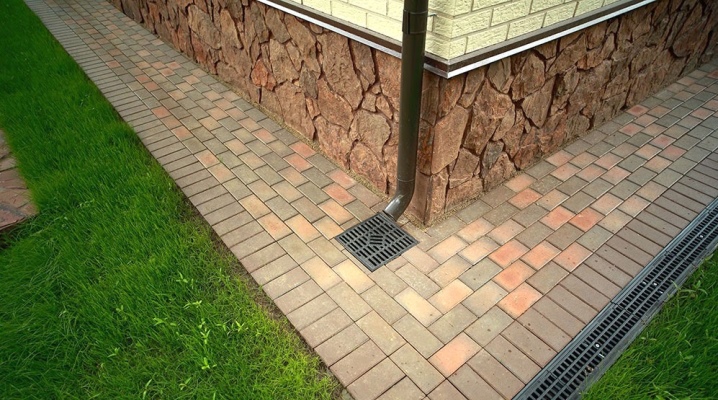
Building a home requires attention to every detail. It is important to make a blind area in accordance with GOST, without saving on materials. Otherwise, water will penetrate through the structure into the ground and destroy the foundation of the building. This will reduce the service life, and the use of the building cannot be considered safe.
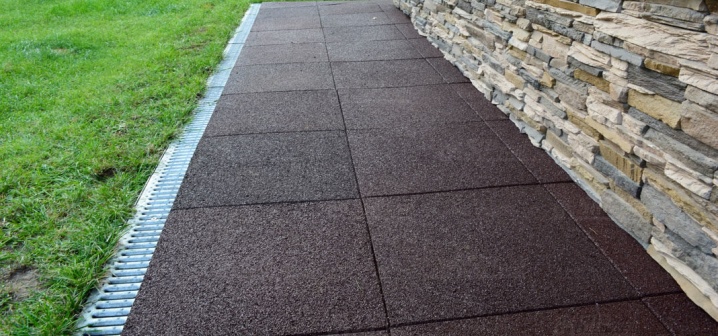
Blind area width
This is the most important design characteristic. There is simply no maximum size, it all depends on the aesthetics. At the same time, SNiP 2.02.01-83 says that any structure must have a blind area. The protective layer around the house is made from a variety of materials. As a result, the structure must be durable, provide waterproofing and insulation.
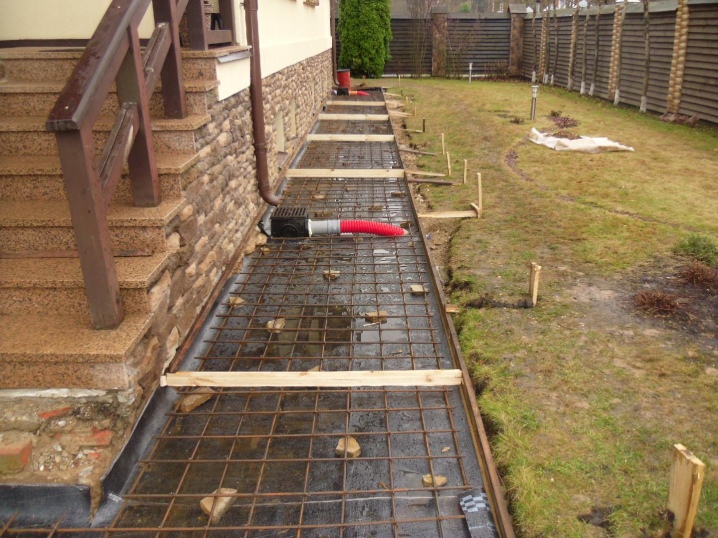
The minimum width of the blind area depends on the overhang of the eaves and the quality of the soil. The first is quite logical. Water from the roof must fall on the structure and be drained away with its help. The blind area is always at least 20 cm wider than the projection of the cornice on the ground.
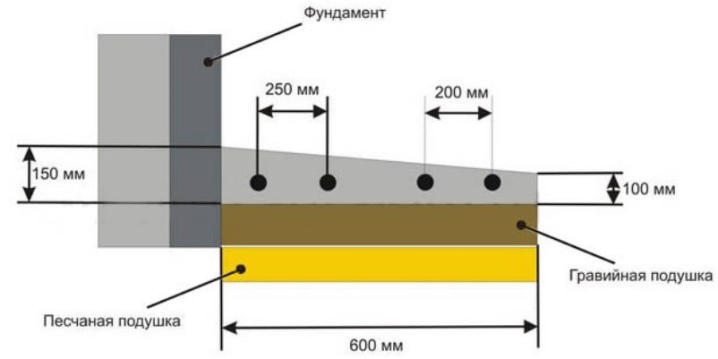
It is necessary to determine the type of soil. The minimum blind area is 80 cm, provided that the soil is dispersed unbound or is represented by medium, coarse sand. If the soil is weaker, easily saturated with water and lends itself to frost heaving, then this width will not be enough. The optimal parameter in such a situation is 90-100 cm.
Many people use the standard, making a blind area 1 meter wide. In this case, there is no risk of being wrong. According to GOST, on soft soil, the blind area should have a width of at least 80 cm, and on stable soil - 90 cm. There is no maximum value.
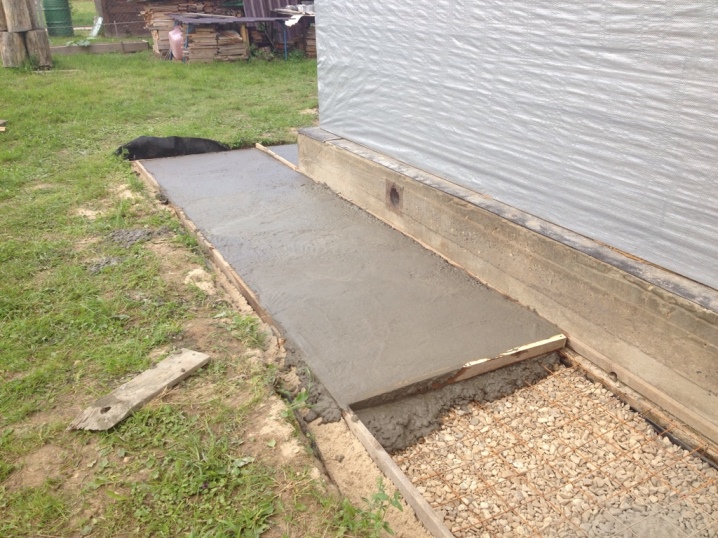
The wider the structure, the more reliably it protects the foundation from the effects of moisture. In this case, it is important to focus on aesthetics. Too wide a blind area around a small building will look very ridiculous. However, it all depends on the preferences of the building owner. A wider blind area will allow you to equip a path around a private house, which is quite convenient. It is important not to violate the norms.

Other important parameters
The blind area must be calculated during the design of the building. The standard applies not only to the width of the structure, but also to the angle of inclination, thickness. The correct blind area can extend the life of the building, protect the foundation from premature destruction. The calculation should take into account all the parameters of the structure around the house.
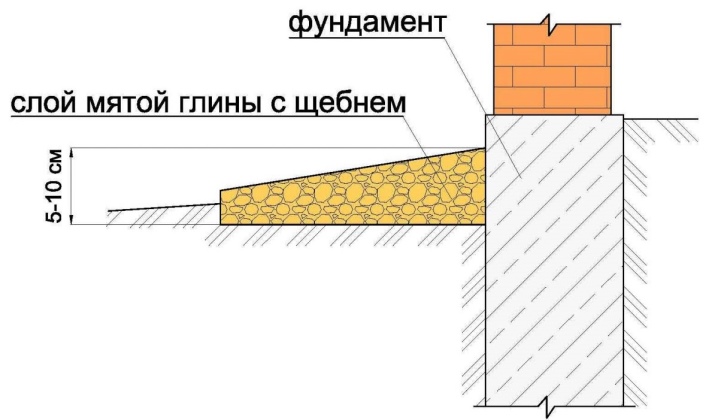
Determining the thickness is pretty straightforward. The total is made up of the dimensions of each material layer. First, sand is added. The width of the layer depends on the characteristics of the soil, but the average is 30 cm. The same amount is taken by the crushed stone bedding.
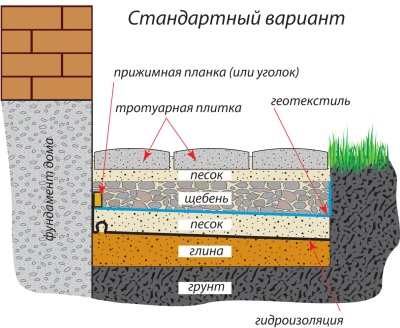
Before laying the top material, the main protective layer is also made. Such a bedding can take 7-10 cm. Decorative material is laid on top. In total, all layers will make up the thickness of the blind area. Moreover, the last value is completely arbitrary, because both tiles and decorative stone can be used.

The thickness of the decorative material depends entirely on the load that will regularly be applied to the blind area. So, for a pedestrian path, 2.5-3 cm is enough. If cars are driving around the zone, then the width should be about 4 cm. A thicker decorative material on the blind area around a private house does not make sense.
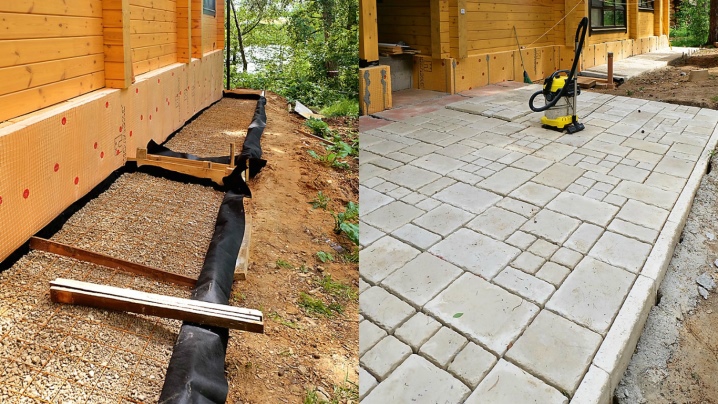
The angle of inclination of the material allows for high-quality drainage of water. The parameter directly depends on the building material that is used. If clay, asphalt or concrete is used, an angle of 3-5 ° should be ensured.

The use of cobblestone or paving slabs has a different meaning.In this case, the angle should be 5 °.
The specified parameters are minimum. It is enough to memorize an angle of 5 ° in order not to make a mistake for sure. You can increase the parameter. A larger angle will speed up the process of liquid drainage, reduce the risk of its penetration into the structure.
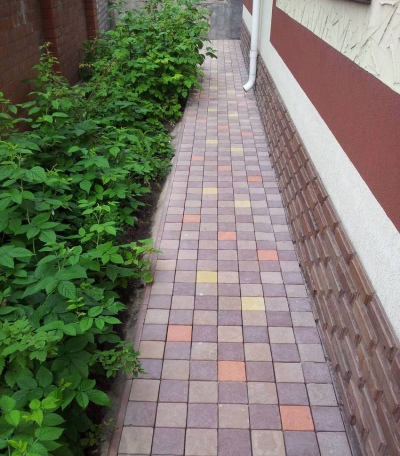
A slope of 5 ° means that for every 1 meter of width, the height must be changed by 5 cm. It is important to stay within the minimum blind area. So, the thickness of the concrete structure along the outer edge should be at least 10 cm, and near the house - 15 cm. The standard geometry of the canvas, taking into account the recommended values, will make it possible to make a high-quality blind area that will extend the life of the foundation.
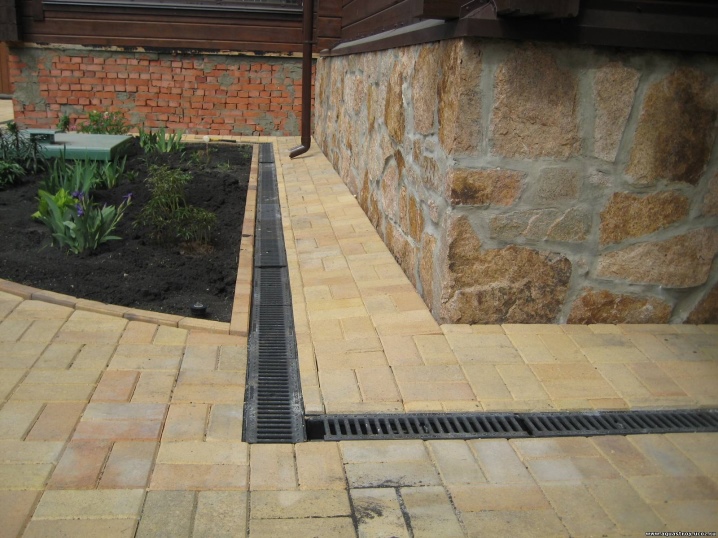













The comment was sent successfully.